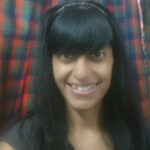5 Things to remember when writing a research paper in the physical sciences

Every discipline has its own conventions to be followed when writing a research paper and the physical sciences are no different. Of course, using words effectively is always of crucial importance, but during my work as a researcher and an academic editor, I have come to identify some recurrent errors in research papers that are more commonly found in the physical sciences than in other fields.
Here, I have listed some examples of such commonly occurring issues in papers written by authors whose first language is not English.
1. Using countable nouns with discrete values
Sometimes, authors get confused when using words that indicate quantity. Words that clearly indicate whether discrete values are being mentioned should be used with countable nouns. Countable nouns are those that refer to something that can be counted, e.g. apple/apples, mole/moles, and atom/atoms. For example, often, a reaction either produces various different functional groups or causes an increase in the number of a specific functional group. Here, “functional groups” is an example of a countable noun, as the number of functional groups can be counted. Consider the following sentence:
It was observed that the alcohol produced increased.
In the sentence above, saying that the functional groups increased would lead to confusion, because an increase or decrease indicates a change in the amount, but “alcohol” is not an amount. Instead, you should state what changed clearly using appropriate words. The above sentence can be corrected in one of the two following ways, depending on the intended meaning:
A variety of different alcohols–primary and secondary–were produced.
Or
The number of alcohol groups produced increased.
2. Choosing the right words for illustrations
A spectrum is an illustration or visual aid that helps us determine certain facts about materials and/or processes. It has different values at different points. For example, an infrared spectrum shows different absorption frequencies within a stated range, and a mass spectrum shows a relative abundance value for each mass-to-charge ratio. However, a spectrum is simply a diagram, and like all other schemes and diagrams, it cannot be measured. Therefore, if you are referring to the process of getting a spectrum, use words such as “obtaining,” “acquiring,” or “recording.” You can use these words alternately to lend some variety to the text, along with a combination of active and passive voice, if you do not want to sound repetitive but have many spectra to refer to.
Note that you can assign values to peaks, or a range to bands, but these peaks/bands are not measured, either, but simply “observed” or “seen.” This is because we do not manually measure anything when it comes to spectroscopy: instruments do it for us and the spectra simply display the key results.
Here are some examples to explain these points further:
Incorrect usage: The IR spectrum for compound X was measured (Figure 5).
Correct usage: The IR spectrum for compound X was acquired (Figure 5).
Incorrect usage: A diffraction peak was measured at 2θ = 65.5°.
Correct usage: The sample showed a diffraction peak at 2θ = 65.5°.
Or
Correct usage: A diffraction peak was observed at 2θ = 65.5°.
3. Using prepositions/symbols correctly to express a range
Prepositions are often used in the form of pairs of connecting words to indicate action/phenomena. However, using a pair of prepositions that do not go with each other can alter your intended meaning or lead to a grammatically inaccurate construction.
Example: I travelled from New York to San Francisco.
Here, “from” and “to” constitute such a pair, indicating a journey. Substituting one of them with another preposition would change the meaning or lead to an incorrect construction:
I travelled between New York to San Francisco.
However, it is correct to say
The train travels between New York and San Francisco.
Similarly, it is inappropriate to say
The concentration was varied between 10–25 moldm-3.
The symbol “–“ in the range 100–250 is shorthand for “to.” The following are different, correct ways to refer to ranges of values or readings:
The concentration was varied from 10 to 25 moldm-3.
Or
The concentration was varied between 10 and 25 moldm-3.
Or
The concentration was in the range 10–25 moldm-3.
4. Knowing when to use the singular form for descriptive words
Authors often incorrectly use the plural form of a word when using it as an adjective or part of a compound adjective.
For example, in the sentence “The reactant concentrations were monitored,” the word “reactant” is being used as an adjective. An adjective is a word that describes a noun, e.g., in “red rose,” “red” is the adjective describing “rose.”
Similarly, in the phrase “nanoparticle-modified electrode,” the underlined part is a compound adjective. A compound adjective connects two or more words that collectively describe the noun that follows them. In this example, the compound adjective describes the electrode: it has been modified by nanoparticles.
Therefore, even if many reactants are involved in the first example, or may nanoparticles are used to modify the surface of the electrode in the second, it would be incorrect to say “reactants concentration” or “nanoparticles-modified electrode,” because adjectives do not get pluralized (just as it is incorrect to say “a five-dollars note,” but correct to say “a five-dollar note”).
Bonus tip: As an interesting aside, authors often mistakenly think that the singular form of an abbreviation should always be used at the first mention (when it is being established in parentheses). However, that is not correct: the abbreviation should reflect the singular or plural form of the fully defined term accurately.
Incorrect: Advanced oxidation processes (AOP) are relatively cost-effective options for water purification and wastewater treatment.
Correct: Advanced oxidation processes (AOPs) are relatively cost-effective options for water purification and wastewater treatment.
5. Knowing when to capitalize
When referring to constants (e.g. the Avogadro number), technique names (e.g. Raman spectroscopy), and names of reactions and plots (e.g. Koutecky–Levich plot), you should use the uppercase for the names of people they are named after, as they are proper nouns. However, there are several terms that use words such as “faradaic” (e.g. faradaic current), “coulombic” (e.g. coulombic efficiency), and “ohmic” (e.g. ohmic drop), which are derived from the names of people concerned with the discovery of the concept. These words should not use capital letters because they have been naturalized as common words describing phenomena and are used as adjectives and adverbs.
A similar practice is followed when certain processes or methods also derive their names from names of scientists (e.g. galvanisation). Note that “Haber process” uses the name “Haber” directly, without using it as an adjective or adverb or units: such names should use a capital letter for the initial. It is also worth noting that we use the lowercase for units such as angstrom, watt, joule, and kelvin, even though the respective unit symbols are in the uppercase—Å, W, J, and K, respectively.
In summary, the following are some crucial points to check to avoid errors and ensure clarity in academic writing in scientific disciplines:
- Clear differentiation between quantity and quality
- Word choice for referring to spectra, peaks, bands, etc.
- Correct choice of preposition
- Correct choice of the singular/plural form
- Appropriate use of the uppercase/lowercase
I hope these pointers help you polish your writing by making you pay attention to those details that often escape attention and avoid some obvious errors when intending to publish scientific writing/academic writing in the physical sciences.
Related reading:






